- Locksmith & Home Security Technician
- Getting a career diploma in as little as 2 months.
- Gain experience with practical exercises and interactive assignments.
- Learn how to identify, create, and duplicate keys.
- Learn to work with several types of locks including safes, valuts, and auto.
- and more...

It is a useful skill for anyone who wants to understand lock functions and help them have a more secure household.
It is a creative and fun hobby like Rubix cubes.
Lock-picking is not just for criminal intent.
You can use this for other day-to-day applications.
Lock-picking tools are so tiny they could fit into your wallet.
I have put together a step-by-step guide to help your hobbyist’s journey through the basics of lock picking.
This guide will assist those just getting started and provide tips and other tools.
Table of Contents
How Does a Lock Work?
Door locks have spring-loaded pins of various depths that open once these are set.
If you look at the key, you will understand the layout.
Use a tension wrench to set the pins.
The wrench will hold each lock slightly until you set each pin.
Once the pins are set, the lock will release and turn towards the direction of the tension you apply.
This idea is the only tip you need to know so you can pick a lock.
Then gain, advanced locks have pins and complex mechanisms to mislead amateur lock pickers.
However, the average door lock does not have these pins.
Is Lock Picking Illegal?
For the most part, owning a lock pick is legal, provided you’re not using it for criminal purposes.
Some people believe it is hard to get because they are illegal.
If they were illegal, only the criminals would own them.
Legality will not stop it from using to unlock your home.
Some states and localities are restricting the use of lock-picking tools.
If you are considering lock picking as a hobby, check your local area if they
There are a couple of lock-picking rules to adhere to all the time.
Never pick locks you own and are not given explicit permission to pick.
Never pick locks that are still in use.
You are violating the law if you break the first clause.
You are a suspect if you violate the law.
Lock picking is for people who love a challenge, and learning new things.
Violating the second rule is risky.
For practice locks, lowering the protection is never an issue.
However, if that lock is used to obtain some degree of stability, the possibility of ruin is unacceptable.
Never take protection lightly.
Key Takeaways
Observe all applicable local, federal, and state laws.
You can never use lock picking to commit crimes.
Some states and countries prohibit civilians from using lock-picking tools.
You can pick the locks you own.
Set Expectations and Excitement
Getting excited and knowing what to expect are two of the most critical aspects of beginning any endeavor.
When considering lock picking as a new hobby, educate yourself on the complexity and application.
You should also watch some of the tutorial videos and see what level you may achieve.
Familiarize yourself with the lock functionality basics.
Lock picking hobby is for you if you are patient and love learning new things.
If you want to improve your skills, search the internet, watch videos, and listen to hobbyists sharing their knowledge.
Understand that lock picking is challenging because it requires a significant time and financial commitment.
They say that lock picking is a perishable ability, so practice until you get better at it.
Key Takeaways
- Do your research.
- Understand how this new hobby works.
- Get ready to begin picking.
Goals and Deadlines
Any hobby needs a set of objectives to keep you interested and committed.
Set your target to pick a lock, then plan for the next.
Select the lock and see how quickly you can pick it.
Is it just being able to rake locks open or single-pin picking?
Do you want to unlock a standard house lock, a car lock, or an unusual lock?
Do you want a locksmith career or a security professional?
Set your objectives early to determent what to buy.
Your objectives may need to be adjusted to be more practical.
When it comes to natural talent, where everything comes naturally, this can increase difficulty.
A deadline is the most effective way to keep you up and running.
Maybe it is when you want to make your first YouTube video or when you compete with other hobbyists.
Key Takeaways
- Start picking pin tumbler locks.
- These objectives do not have to be long-term.
- This objective will guide your buying decisions.
- Your objectives may change as you better understand your hobby.
- Make sure your dreams are achievable.
Basic Lock-Picking Tools
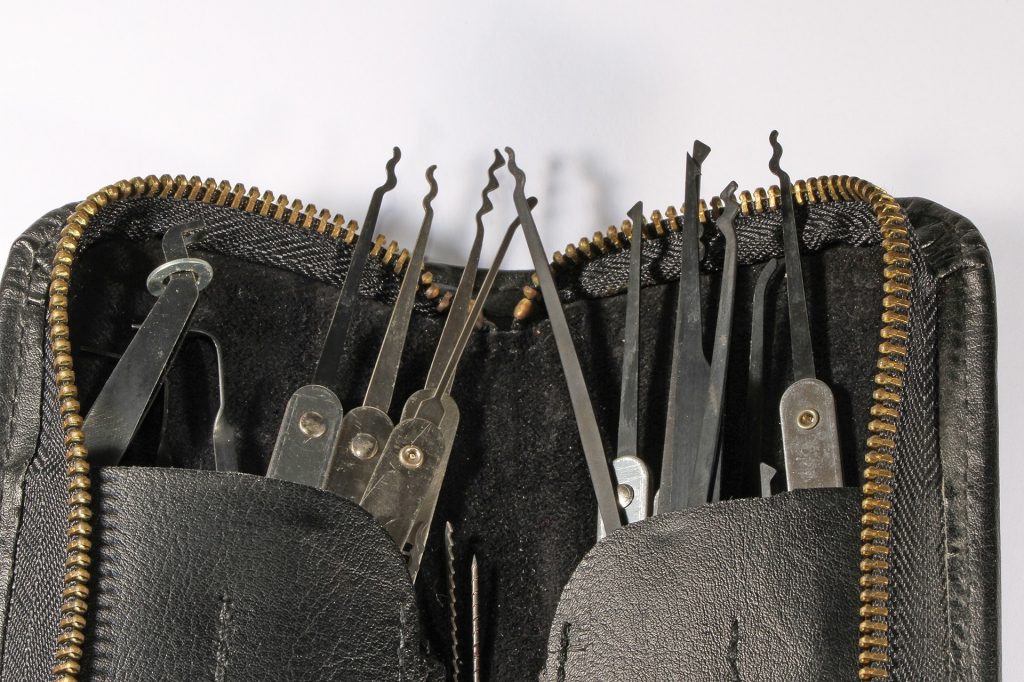
Lock-picking tools are small and simple.
There are also large sets with dozens of easy-to-handle picks, but the flat and 3-4 inches long are better.
These will fit into your car compartment or wallet when you need them.
The titanium lock-picking set is all you need.
The feeler pick and tension wrench are the most basic setup tools.
You can use the feeler picks for individual pins setting and to apply tension to the lock, you need the tension wrench.
Tension Wrench
There are different tension wrench styles and sizes.
Based on your needs, these can be twists or notches, an L-shaped piece of metal, or an Allen wrench.
The thin L-shaped piece is the most basic type that will get any job done.
Feeler Pick
Feeler picks are small pieces of metal used to apply pressure to individual pins.
This pick can methodically let you work with individual pins through a lock set.
They require skill and more practice than a rake.
But, with feeler picks you have a higher success rate than other picking methods out there.
Lock Picking Rake
The lock-picking rake is a method where you randomly rake the lock back and forth instead of setting each pin.
Practically speaking, this raking method is effective and quick.
They have different styles, each one with a varying success rate.
When you assemble a lock picking kit, have a few different rakes, a tension wrench, and one or two types of feeler picks.
This lock-picking kit is only about 30 bucks.
Choose Your Lock
The quickest way to get better in any pursuit is by practicing.
With lock picking, practice a particular lock to focus.
You will always learn something new with each lock you pick.
This guide will show the lock picking best practices – from hobbyists to absolute beginners.
Because every lock is unique, try at least three of each lock type.
Try to pick about ten similar lock models then try two easy ones and two that are impossible to pick to get the most of this progression.
Each lock has different bitting, tolerances and binding order that affects lock picking.
Here are three of the top practice locks you can try at home.
Master Lock 141D
Probably the most challenging experience you will learn is to sense and interpret the feedback of the lock.
Master Lock 141D will give you that clear and consistent feedback.
But, when it comes to cheaper pin lock, it is challenging.
There may sometimes be too much core slop.
So the feedback is dull, and mushy making it difficult to accomplish.
This practice lock is good for beginners because it is like the one you will see in a little girl’s diary.
But, you will learn the lock picking fundamentals, tension control, and binding order.
Master Lock #7
You can start honing your skill with this lock.
It is similar to Master Lock #3.
The keyway is so much smaller.
It has poor tolerances, four standard pins, a light spring-loaded core, and an open keyway.
The small and open keyway refines your skills and teaches you the art of lock picking.
With practice, you will master how to maneuver and squeeze your picks in tight spaces.
Master Lock 140
Now it is time to raise the difficulty level with higher tolerances lock.
If security pins sound scary to you, don’t be.
As you learn, they are easier to pick.
The Master Lock 140 is your introduction to spool pins like the #7.
This practice lock has one standard pin, four-pin core and three spool pins.
New pickers could have thrown hobbyist and amateur pickers in a spin, but will definitely teach them a priceless lesson.
Start Picking
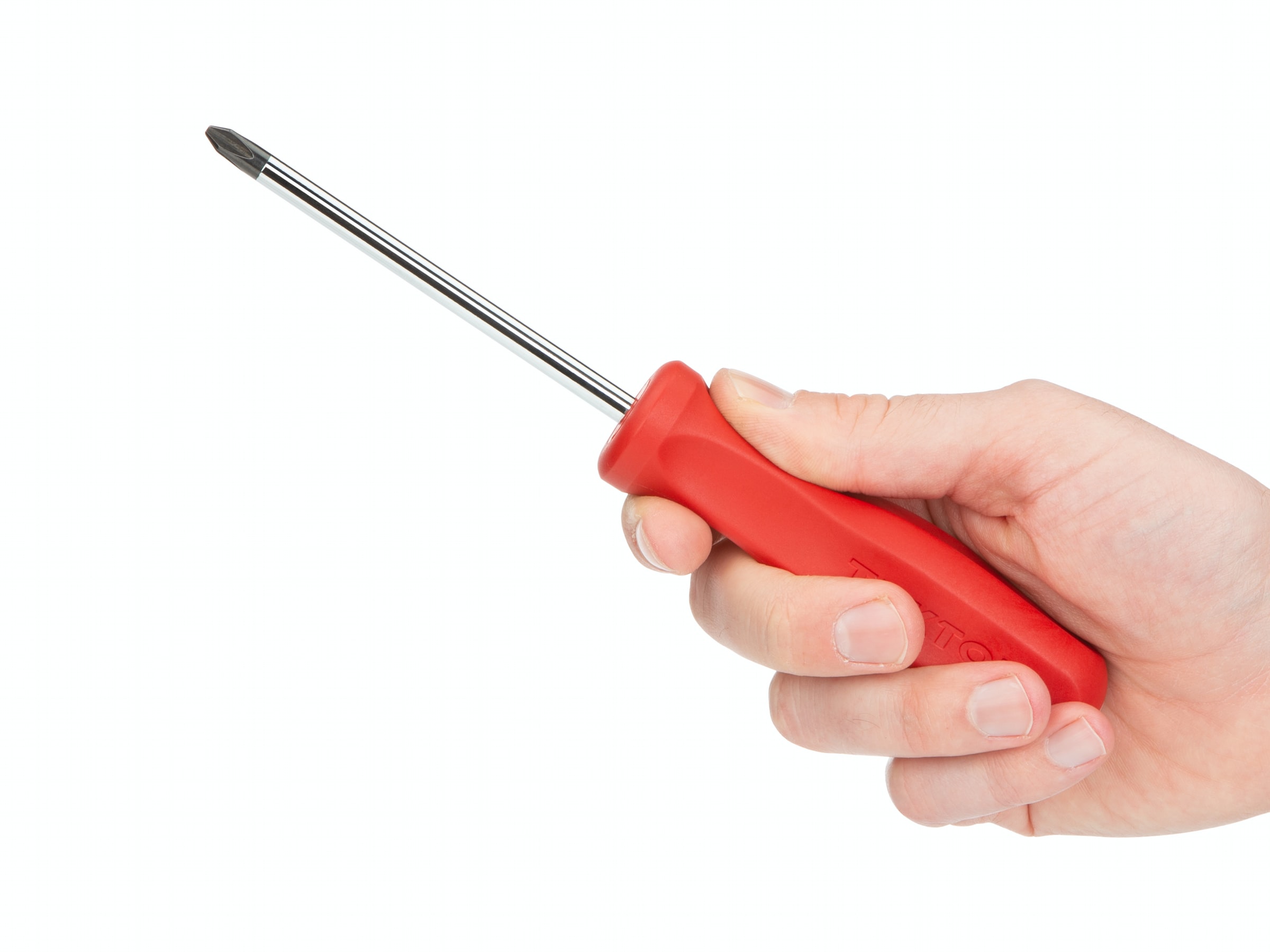
After you have all your resources and define your expectation, you can start picking.
It is hoped you already have the basic lock pick kit and a tumbler lock.
Ensure the right picks and lock that is easy to pick.
In any case, when you are confident enough, you can start with the manipulation techniques.
Manipulation Tips
Unlock the lock using the key.
Make sure your practice lock is in good working order.
Your only problem is if the lock does not open with the key.
And if you have no intention to pick the single pin lock, insert your hook or some other gadget for single pin picking.
This gadget is a troubleshooting technique as if using the key.
You attempt to pass the internal mechanisms around to see if something is clogged.
You will sense how the lock works from the inside.
Use your preferred method and maintain constant tension to open the door.
Check to see if you can open it the same amount of time the first time.
Pay attention to the tension and how you shift the instrument across the keyway.
Test out any theories about the most critical aspects of your performance.
The first few active opens will reveal your good and bad habits.
Despite your best efforts, you can fail.
And if things get too quick, make sure it is because you know what you are doing.
Take it slow and see if you have the same result in the end.
This time, you can start with single pin picking.
Key Takeaways
Ensure that your locks work.
As you pick the lock, learn what you can.
Be gentle with your tools and locks.
Be patient; your objectives are flexible.
Practice
Lock picking is a perishable skill.
You lose it without practice.
Incorporate your practice and daily routine.
Pick one lock every day.
You have plenty of time to enhance your skills.
Develop your skills and move to your next target.
Do additional research.
Investigate problems and list potential goals you like to achieve.
If you travel, you can take your lock picks with you.
Be aware of the laws of the places you will be visiting.
Please read our article on how to fly with lock picks.
It is unquestionably more feasible than you would think.
Key Takeaways
If you do not use your talents, you will lose them.
Practice is something you can do at any time.
When you have your lock picks when you travel, be careful.
Joining the Community

Set goals and deadlines for yourself.
Try to join online discussion boards and meetup parties.
This group will be the foundation of your support system.
When you are stuck, you know where to ask for help.
Joining a support group will solve your queries and doubts about your work.
There will be a sense of competitiveness, as you will see others succeeding, and you will have a community of people who will be pleased with your achievements.
Lock Picking 101 and Key picking are two excellent resources.
They are excellent learning opportunities, and the majority of the users are courteous.
Participate in lock exchanges and lock trading if you are a group member.
This practice lowers the cost of replacement locks and easily swap out the ones you have outgrown.
There are challenge locks for sale, or create your challenge lock, to put your lockpicking skills to the test.
Key Takeaways
Forums and meetup groups are a safety net.
These groups will teach you a lot.
These individuals can inspire and motivate you.
Use these tools to share and exchange locks.
Growth
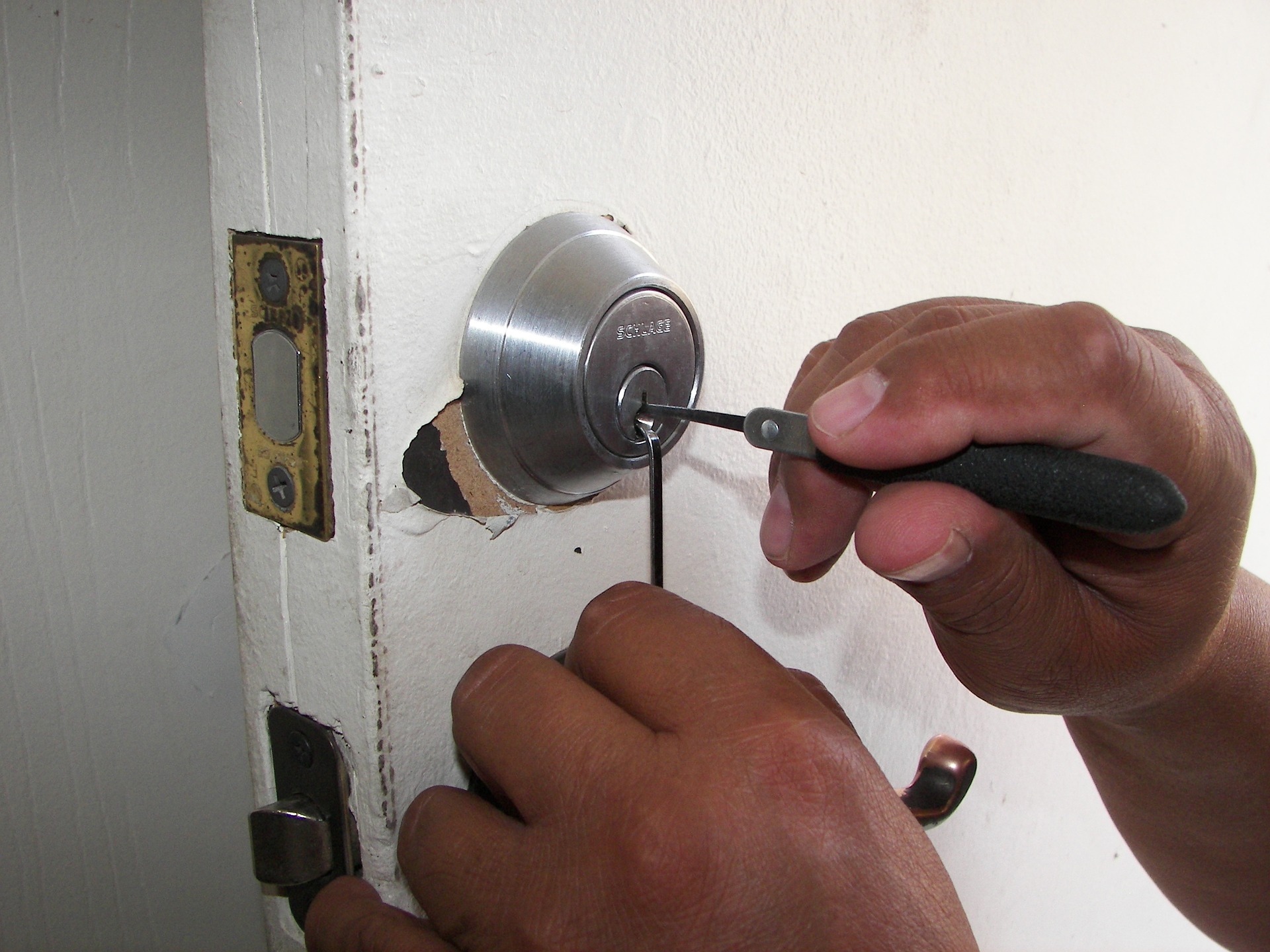
This move is a little misleading.
But, this stage relates to expanding your abilities.
Essentially, once your resources, support network, and resources start to form, you can start with your new set of skills.
Going over the rules again is never a bad idea, but you can start again.
This idea is similar to switching from normal pin tumbler locks to other locks.
This switch necessitates new aspirations, revised priorities, sometimes different picks, and, most importantly, new locks.
The key distinction is that you cannot ignore the need to hone your existing skills.
You must, and at the same pace, your skills will decline.
It becomes easier with each repetition.
Restart the procedure.
Continue to hone your existing skills while learning new ones.
Repeat the process until you’ve absorbed all of the information.
Getting Back on the Horse
From time to time, we all get preoccupied with other things.
But, it is important to enhance your skill, or you will go back to the basics.
Take it easy.
If you forget anything, go back to your sources of information.
Although it will seem that you are starting over, we assure you that you are not.
You are now getting back on your feet.
It is nice to get back into it, but do not be afraid to take your time.
Return to the fundamentals and rebuild your skills.
It is tempting to get back some of your coolest tricks, but that is not the best way to rekindle your passion.
The Bottom Line
If you love lock picking, you will never run out of ideas to learn new tricks to satisfy your curiosity.
Begin competing and travelling around the world.
You may start a company based on your new abilities.
The only time change comes to a halt is because you want to do so.
We wish you luck with your new hobby.
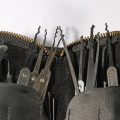


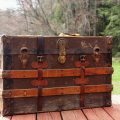

Leave a Reply